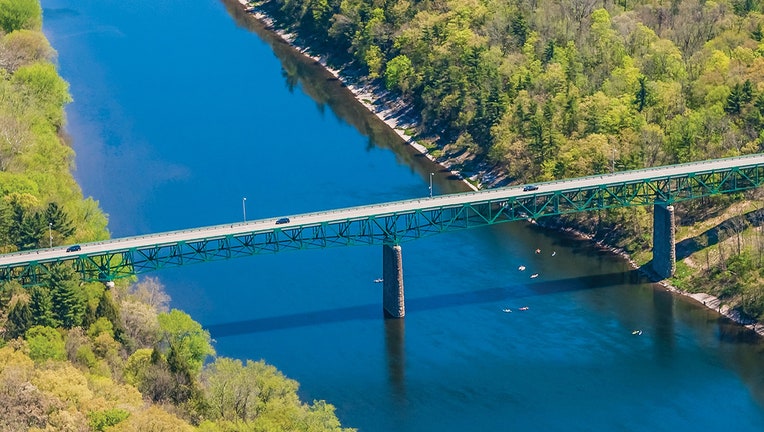Tolls going up at New Jersey–Pennsylvania bridges

The Milford-Montague Toll Bridge carries U.S. Route 206 over the Delaware River between Montague Township, N.J., and the Milford, Pa., area. (Delaware River Joint Toll Bridge Commission photo)
Motorists traveling between New Jersey and Pennsylvania need to be ready to pay more to cross the Delaware River.
The Delaware River Joint Toll Bridge Commission, a bistate agency that operates river crossings connecting the two states, is raising tolls on April 11, 2021, and again in 2024. The tolls haven't gone up in a decade.
The commission, which operates entirely from revenue generated by tolls, cited the pandemic-related decline in passenger car traffic (and thus toll revenue) and the burden of maintaining 13 bridges over the Delaware that have no tolls. The commission is required by law to operate and maintain those crossings, which it calls "toll-supported" but are free to cross.
"One of the most significant changes in the new toll schedules is the establishment of a two-tier system of toll rates, under which Cash/TOLL BY PLATE customers would pay higher tolls than E-ZPass-equipped motorists," the commission said in an announcement. "This type of pricing is a prevailing trend among toll agencies nationally because it helps cover the increased processing costs associated with Cash or license-plate-billing collection methods."
Starting April 11, car tolls increase from $1 to $1.25 for drivers with an E-ZPass account and from $1 to $3 for car drivers who pay cash at these seven bridges:
- Trenton-Morrisville (Route 1)
- New Hope-Lambertville (Route 202)
- Interstate 78 (between Northampton County, Pa., and Warren County, N.J.)
- Easton-Phillipsburg (Route 22)
- Portland-Columbia (Routes 611, 46, and 94)
- Delaware Water Gap (Interstate 80)
- Milford-Montague (Route 206)
On the new Scudder Falls Toll Bridge, the E-ZPass rate for passenger vehicles stays at $1.25, but the cash toll increases from $2.60 to $3 on April 3.
In 2024, drivers who use E-ZPass would see tolls rise by 25 cents to $1.50. Also, the E-ZPass commuter discount program will be eliminated at all eight of the commission's toll bridges.
With The Associated Press
Get breaking news alerts in the FOX 5 NY News app. Download for FREE!

